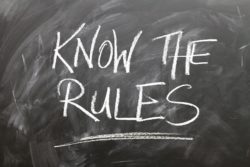 Last week we talked about some grammar “rules” that can now be “broken,” including beginning sentences with conjunctions, ending sentences with prepositions, splitting infinitives, and using they as a singular pronoun. Today we will talk about three more of those “rules.”
Last week we talked about some grammar “rules” that can now be “broken,” including beginning sentences with conjunctions, ending sentences with prepositions, splitting infinitives, and using they as a singular pronoun. Today we will talk about three more of those “rules.”
1.Using em dashes instead of quotations marks. Yup. Some authors are using em dashes in their dialog rather than quotation marks. So there is no more “he said,” or “she said.” Just dashes and something someone said.
—I didn’t say that.
—Yes, you did. I heard it.
—I would never say anything like that.
—Well, you did, and I can prove it.
I haven’t personally read any books with this method of doing dialog, but I know that the author Roddy Doyle does. I have not read him, but he does dialog that way in his 2017 novel, Smile.
2. Using run-on sentences. Before we continue, let’s clear up exactly what a run-on sentence is. Many people think a run-on sentence is simply a really long sentence. They are not the same. Sometimes a run-on sentence may indeed be a very long sentence, but there are long sentences that are not run ons, and there are short run ons. A run-on sentence is one that actually contains more than one complete sentence, but there is no period or semicolon—or conjunction. Usually a run on is put together with a comma, which cannot be used by itself to separate two sentences. A sentence can be long enough to go around the equator, but if it has enough semicolons and conjunctions, it could be a legitimate sentence—although obviously a poorly written one.
Here is a run-on, even though it is short: Don’t worry, be happy.
Here is a legitimate sentence, although rambling and not a good one: I got up early and then went out to have breakfast, and then I played some tennis with some friends before getting some errands done, after which I took a short nap, and then I sat out in the sun reading until dinner time, and then I picked up a friend and we went out dancing.
It was the best of times, it was the worst of times . . . Charles Dickens used run ons, as did Faulkner (or was it Hemingway? I can never keep them straight, and I don’t like either one). I am sure many contemporary authors do as well. Is it okay?
Frankly, I see no reason to use run-on sentences. What is wrong with using a period or semicolon instead of the comma? Or maybe putting a conjunction in? I think one possible situation in which one might want to use a run-on sentence is for pacing, particularly in dialog. Using commas between a few consecutive sentences someone says could be used to indicate that they are running on and on without stopping. I guess you could even have such a situation in narration.
To my eye, run-on sentences are even worse than sentence fragments. Fragments seem to have a place in some types of writing, particularly promotional. Run-on sentences, to me, just seem, well, wrong. Certainly run ons (and fragments) don’t belong in formal or academic writing. But then, I am sure there are exceptions to that idea too.
The worst thing, of course, is when a reader catches a writer using a run-on sentence in a situation where the writer obviously simply didn’t know his or her mistake.
3. Using who instead of whom. Many people never use whom at all. And it is probably preferable to never use whom than to use it where who should be used. That just sounds weird: Whom are you? (Nope. Wrong time to try to use whom.) I have heard that by 2025, whom will be gone, so that is good news for those who don’t know the difference. It is bad news for those of us who do know the difference and are grammar snobs because we do.
What is the difference? Who is a subjective pronoun like I or he or we. Whom is an objective pronoun like me or her or us. Who is thus used for subjects, and whom for objects. You can figure out if you have a subject or an object on your hands by finding all the verbs in the sentence in question. Locate the subject for each verb. If it looks like who(m) must be the subject because you can’t find any other subject for the verb, then use who. Also, you use whom after prepositions such as for (whom), with (whom), to (whom), etc.
Grammar Diva News
Now available on Kindle at a special introductory price of 99 cents: Get your summer reading ready! (Available on all other e-readers in about a week. Available on Amazon in paperback in a couple of weeks.)




The em dash has been much used in other languages. Many Spanish books use it. And have you read Ulysses by James Joyce?
Are you referring to in dialog? I know the em dash is often overused in its job as a thought break. If I have read Ulysses — and I think I have — I don’t remember anything about it, and I did not much enjoy it
I have heard of a way to figure out how to use whom and who. If you can answer “him”, use “whom”. If it is “he”, use “who”. For example: To whom should I give the ball. I will give the ball to him. Who gets the ball next. He gets the ball next.
Thanks so much for that helpful tip! Yes, that is a good way — without having to deal with grammatical terms — to determine which pronoun you should use. Frankly, I got a little lazy writing the post and decided not to delve any further into how to tell this difference. However, that is a great way.